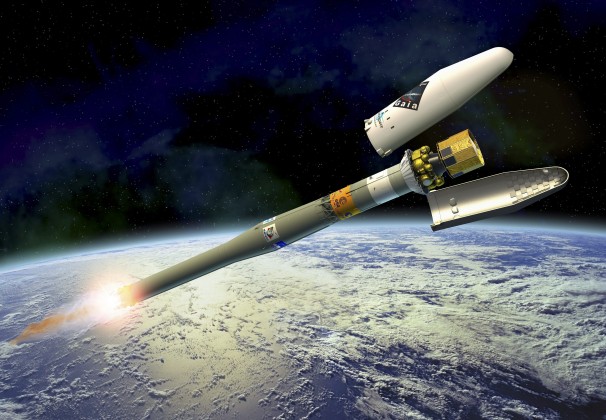Frank Jordans and Danica Coto
AP
December 20, 2013
The European Space Agency launched its star-surveying satellite Gaia into space Thursday, hoping to produce the most accurate three-dimensional map of the Milky Way and to better understand the evolution of our galaxy.
The satellite was lifted into space from French Guiana at 6:12 a.m. (0912 GMT; 4:12 a.m. EST) aboard a Russian-made Soyuz rocket, the agency said.
Soon after the launch, Gaia unfurled its 10-meter (33-feet) circular sun shield – a crucial moment in the mission. The shield protects the spacecraft’s sensitive instruments from the rays of the sun while simultaneously collecting solar energy to power the spacecraft.
“Everything was super smooth,” said Paolo Ferri, head of mission operations at the Paris-based European Space Agency.
Gaia is now heading for a stable orbit around a point known as Lagrange 2 – some 1.5 million kilometers (930 million miles) away on the opposite side of the Earth from the sun. Once it gets there next month, the satellite’s instruments will be switched on and it will follow what Ferri described as “a very peculiar pattern” designed to keep its back always turned to the sun.
Timo Prusti, ESA’s project scientist, likened the mission’s goal to the switch from two-dimensional movies to 3D. At the moment, he said scientists are working with a largely “flat” map of the galaxy.
“We want to have depth,” he said.
Using its twin telescopes, Gaia will study the position, distance, movement, chemical composition and brightness of a billion stars in the galaxy, or roughly 1 percent of the Milky Way’s 100 billion stars.
The data will help scientists determine the Milky Way’s origin and evolution, according to Jos de Bruijne, deputy project scientist for the Gaia program.

